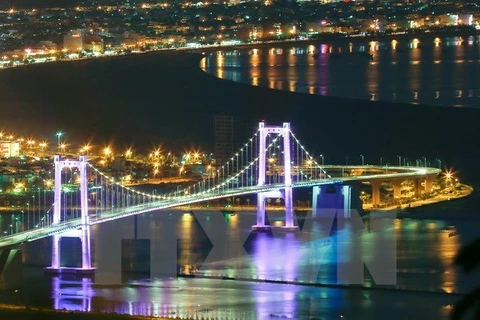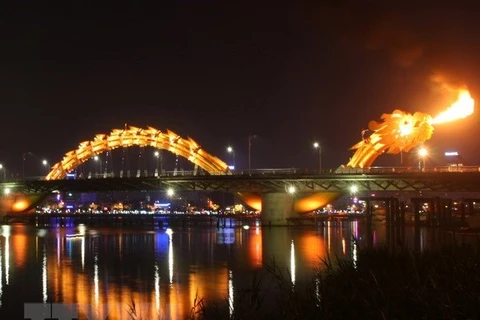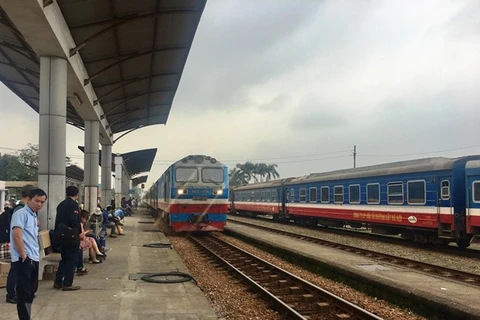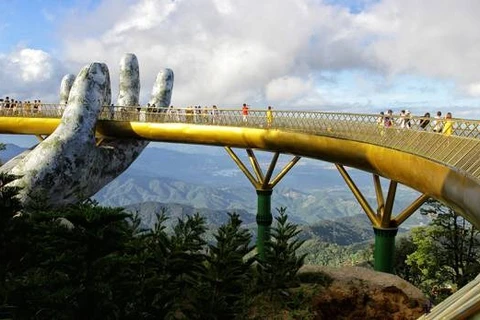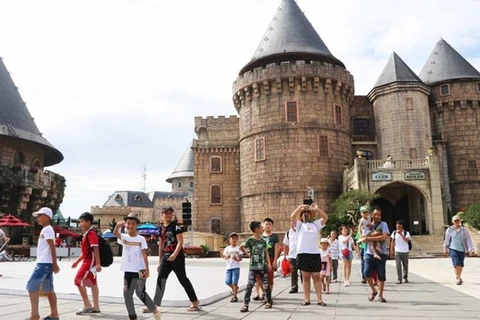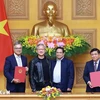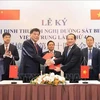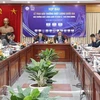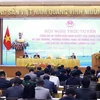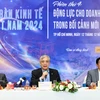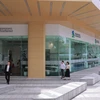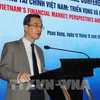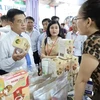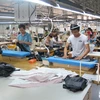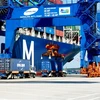Da Nang (VNS/VNA) – The central city of Da Nang is aiming for the sea-based economy along with tourism and hi-tech industry to drive its growth over the next 25 years.
Being one of 28 coastal localities of Vietnam, Da Nang is home to a more than 15,000sq.m fishing ground, 70km of coast and deep-water ports.
It plays a key political, economic, security, defence role and is set to become a major maritime economic hub and driving force of the central-Central Highlands region.
According to the municipal Department of Agriculture and Rural Development, the city’s total output of fishery products in 2019 reached 37,636 tonnes, up 3.8 percent compared to the previous year.
Fishing has been a traditional industry in the city for a long time.
Nam O Fishing Village in Lien Chieu district is well known for making fish sauce and is still the main source of income for villagers there.
Nguyen Phu Ban, Director of the city Department of Agriculture and Rural Development, said to preserve the tradition of making fish sauce, city authorities had implemented a series of policies to develop the fishery sector and assist fishermen.
Since 2014, the city has allocated 110 billion VND (4.7 million USD) to assist fishermen to build 141 boats with a capacity of 400CV.
As part of the city’s plan to upgrade fishery infrastructure, a fishery service industrial zone and seafood wholesale market were built in Tho Quang ward and developed into a fishery logistics service area which is the docking port of ships and boats from not only the city but from across the country.
In 2010, Tho Quang Port welcomed more than 10,800 boats and ships with more than 63,300 tonnes of fishery products.
Eight years later in 2018, the number of boats and ships passing the port more than doubled (nearly 23,800) with nearly 129,600 tonnes of fish.
Following a resolution adopted by the Politburo last year, fishery development will become one of the five spearhead economic areas of the city.
According to Ban, the city aims to switch from traditional fishing to modern and sustainable methods which use advanced technologies.
The city has encouraged fishermen to switch from inshore fishing for commercial purposes to fishing combined with tourism, services and entertainment activities and reviving traditional fishing villages to organise village tours.
The local Department of Agriculture and Rural Development also plans to step up inspections of offshore fishing to tackle illegal fishing and apply IT in managing fishing boats, he said.
At the Vietnam Logistics Forum 2019 in Da Nang last November, domestic and foreign experts said Da Nang had opportunities to become a regional and global logistics hub.
According to Ho Ky Minh, Vice Chairman of the city People’s Committee, to turn Da Nang into a logistics hub of the central region by 2030, the city had upgraded transport network connecting ports with cargo terminals and the Hai Van Tunnel.
Lien Chieu Port is hoped to become a gateway into ASEAN and the Asia-Pacific logistics service supply chain. By 2030, it will cover 35ha. By 2045, the area will be expanded to 69ha.
The third terminal of the Da Nang International Airport will be constructed and serve 13 to 15 million passengers per year.
Logistics services of Da Nang are expected to meet 30 percent of cargo transporting demand through ports by 2025 and 55 percent by 2050.
Minh said the biggest difficulty was a lack of logistics human resources because there was no local facility specialising in logistics training.
At the Vietnam Logistic Forum 2019, the municipal People’s Committee and Vietnam Logistics Business Association signed a cooperation agreement on training innovative and high-quality human resources for logistics services.
As one of three pillars of the city’s growth, the tourism sector in Da Nang welcomed good news in 2019 with the largest number of foreign visitors ever recorded at nearly 3.5 million.
However, according to the municipal Department of Tourism, the sector is seeing a rapid growth of tourists, which may result in overloaded infrastructure and spoiling environment.
Truong Thi Hong Hanh, director of the department, said in 2019-21, besides developing markets like the Republic of Korea, China, Japan, the city would step up promotion in potential markets like western Europe, Russia, Australia, North America and India./.

